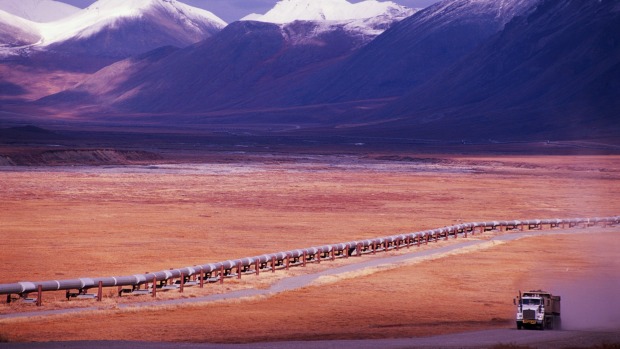
Take a journey by road and rail chasing the midnight sun in Alaska.
A glimpse of the sublime, an untrammelled wilderness, an opportunity for genuine adventure - everybody comes to Alaska looking for something.
Some come for a comfortable luxury cruise. Others come to get off the grid, homesteading in the back country in ways that make the Amish look decadent.
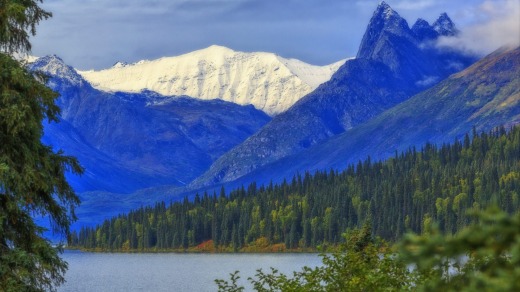
That Alaska can accommodate almost anybody is a testament to its size, both geographic and imaginative.
When I come to Alaska, it is in search of renewal. I want space, silence, green things - everything that is opposite to the big city where I live. In fact, I want to get as far away from big cities as possible.
Before taking my flight, I spread a map of Alaska across my bedroom floor and moved a finger up from the populated coastline, through Denali National Park, across the Yukon River and Fairbanks, past the Arctic Circle and along the Dalton Highway to the Continental Divide, where water begins to flow north towards the freezing Beaufort Sea.
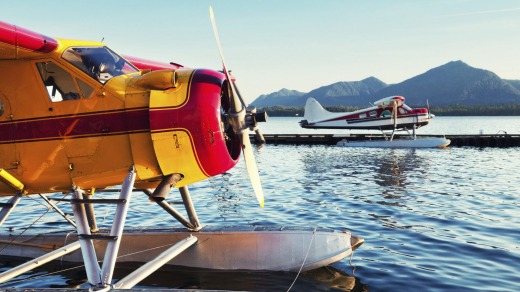
The Continental Divide would be my final destination, I decided, imagining a lonely nowhere hidden in the Brooks Range, far from the madding crowd of Facebook.
I arrive in Anchorage at 1am. By 7am, I'm at the railway station, checking luggage with the porter.
A train is the perfect way to start a trip into the wild here. The Alaska Railroad Corporation, in operation since 1923, helped define modern Alaska, planting work crews and their families through the rugged interior in towns that bloomed and faded along freshly laid tracks.
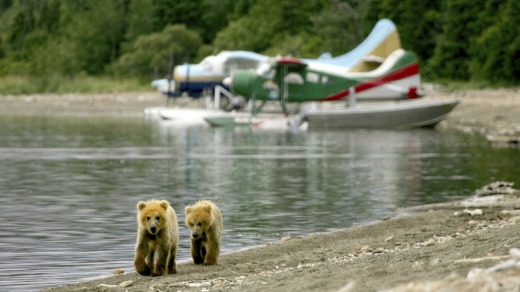
Travel would have been fairly basic then, of course, but today the carriages are modern and polished, with Gold Class even offering domed glass ceilings that make it possible to see everything everywhere all at once, like a moving aquarium. Much to my delight, this means that I can watch Anchorage - a city of 270,000 people - give way on either side to a seemingly endless forest of spruce trees.
The civilised world turns into a Dr Seuss book, furry and strange. This is a transition to which the man sitting opposite me nods in approval, saying, "Well, this is fun." He has driven across America and ditched his Corvette in a parking lot.
Our train traces a route over marshes and permafrost. As we chug north, a bartender dispenses hot drinks and a conductor offers commentary on topics ranging from the Alaska State Fair to cabbages in the Matsu Valley.
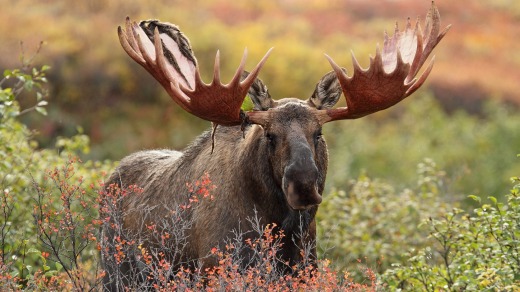
Twice a moose pops up in the meadowlands, causing passengers to crush to the left, banging their zoom lenses against the window.
I see it all, but Alaska's beauty has induced a kind of waking coma.
So, sitting with my cup of coffee, I count miles and towns in blissful solitude: Whitney, Eklutna, Matanuska ... Wasilla.
"Can we see Russia from here?" somebody calls down the aisle, poking fun at Sarah Palin, who used to live there.
Although I plan to go right to the end of the line and abandon the train - one more sign of civilisation, after all - it is possible to arrange a ticket that allows for multiple stops along the way. I get off at Talkeetna first.
Until 1923, this was as far as a train traveller could go. Today, it is the base station for mountaineering trips up Mount McKinley, although, when I visit, the success rate for reaching the summit (6194 metres) sits at a paltry 35 per cent.
Most hikers are defeated by the mountain's mercurial weather system, making expeditions expensive gambles at about $8000 a head.
Thankfully, there are plenty of more dependable satisfactions in Talkeetna, such as blueberry pie in the Roadhouse. Its owner, Trisha Costello, hasn't climbed Mount McKinley, but she says, "I tell people I climb my mountain here every day: keeping the coffee hot."
Her glorious establishment is stuffed with fairy lights, paintings, communal tables and cuckoo clocks, and it has a fireplace. The rooms are comfortable, offering the kind of warm, ramshackle ambience that only accrues through 100 years of hospitality.
The town of Talkeetna (or at least its main street) is filled with slick craft stores and curated art galleries. Princess Cruises has come in and spruced up the place.
But not all of it, thankfully. Tucked off to the side in an old schoolhouse is the gritty Historical Society, where one exhibit points out that Nagley's - Talkeetna's general store - "once sold shotguns and dynamite alongside lard and flour".
The moving tribute to Don Sheldon, a Talkeetna bush pilot, tells the story of a man who prospected for gold before he began flying along the Arctic coast looking for polar bears.
"He flew fur buyers to remote interior and Arctic villages, and was a vital link with civilisation for many bush dwellers," a sign explains.
No matter how glossy surfaces appear, the wildness is never far away in Alaska.
You could stay in Talkeetna and take Sheldon's lead. One morning I fly in a de Havilland Beaver to a remote moraine lake, gliding above a mind-bending river of ice.
But eventually I board the train again to continue north, wanting to hike in Denali National Park.
Several walking trails can be easily reached from the park's main entrance. The Savage Alpine Trail, for example, twists so high above the valley floor it can feel as though you're standing in the sky.
Harry Karstens, Denali's first superintendent, put it well when he said of the park that "there is little to offer visitors who need attendants to make them comfortable, who think of walking in terms of cement and board paths, riding in terms of cushioned motor cars ... But there is much to offer those who understand the language of the great silent places."
Indeed, the restorative powers of this majestic place have been known for many decades. During World War II, while the Japanese carried out their tumultuous siege against the west of America, American soldiers were sent here for a week's leave to hike, fish and ski. Call it a perk of the job.
The king of "great silent places" is in the north, of course. I am restless to get there now, so yet another trip on the train takes me to my terminus in Fairbanks, a sleepy town that is also the third largest urban centre in the state. At Fairbanks, after another early-morning start, I join the Northern Alaska Tour Company for a 416-kilometre jaunt up the Dalton Highway.
The Dalton Highway is not like other highways. There are many giveaways for this, including the Bureau of Land Management's warning brochure, which lays out the rules of the road ("Big trucks have the right of way"), and lists things you should bring for your vehicle, such as "at least two full-sized spare tires mounted on rims" and "emergency flares".
From its beginning slightly north of Fairbanks to its ending in Deadhorse, on the edge of the Beaufort Sea, the Dalton Highway runs 662 kilometres through some of the most remote and unforgiving wilderness on the planet.
In winter, much of it turns to ice. In summer, much of it turns to mud. Originally called the Haul Road, it was built in the 1970s to service the Trans-Alaska Pipeline, which threads across the landscape like one of those crazy straws you put into a cocktail.
I have been on many remarkable road trips around the world, but this is the strangest. The oil pipeline rises and falls alongside the road, a constant hallucination.
There are potholes that would be classified as small lakes in other places. Wide plains of grass-covered permafrost stretch into infinity.
The largest biomass is insects. The further north we go, the more monstrous the mosquitoes become, until they are bigger than my fingernails and more wily than Houdini, wriggling into my underpants.
The people become more distinctive as well - more distinctly Alaskan, that is. At Yukon River Camp, where we stop for supplies, I wander into a small wooden shack by the side of the road and meet Dorothy, an Athabascan native, who lives up a river in the middle of nowhere.
"Look," she says, lifting the scalp off a bison head. "I did something here. See this hidden pouch? I call it a wall safe. You hang it up - like this - and nobody'll know. Just looks like a head."
Next is a river otter, folded in half with a piece of string through its mouth. "I call this one an elegant bag," she explains, modelling it over her shoulder.
Then there is the coyote: "That's a hat. That's the bottom half of him. That's trapper style." And black bear ears: "Perfect for binoculars."
I buy a lynx foot, which seems to please her immensely. "You know," she say, sighing heavily, "I should start carrying my wolverine purse again."
At Milepost 115, we cross into the Arctic Circle, which is the line above which the sun is visible for 24 continuous hours at least once a year. "It is the sunlight, always the streaming sunlight, that matters most," wrote Barry Lopez in Arctic Dreams. "The Arctic is unlike any place you have ever been. The light, the plants, the animals - everything works differently here."
I understand this mostly clearly in Coldfoot, a gold-rush town turned truck stop where I spend an evening. The coldest temperature on record here was -62 degrees Celsius, at which point the battery died. Giant trucks slide in and out all through the night.
People talk about animal trappers the way others talk about lawyers. A man tells me New York is "real wilderness" and that, while he loves it up here, "I'm just so sick of the damned mosquitoes."
Another man raises Inuit dogs for expedition work: "They'll get buried in the snow at night, and then wake up, and their heads will pop out like jack-in-the-boxes," he tells me.
Coldfoot is not luxurious, but it is fascinating and challenging, as all travel should be. Staying here is like camping on Mars, which is something else I would do in a heartbeat.
Eventually I get my wish about the Continental Divide. Another early-morning start and we are rumbling north again, watching trees disappear, climbing into ominous mountains. Soon we are in a sea of fog. The vehicle has become a submarine, floating past peaks outlined in silhouette, a Jules Verne adventure.
The Continental Divide, at Atigun Pass (1422 metres), looks unremarkable at first. The wind is horrendous.
There is an avalanche warning. Even the pipeline has disappeared.
But as I climb out of the vehicle and stumble across the road, trying not to be blown over, I am filled with a buoyancy that makes me as happy as a child. The Brooks Range is 126 million years old, the largest wilderness refuge in North America.
The mountains rise and fall, Robert Marshall once wrote, "as if the waves of some gigantic ocean have suddenly become frozen in full motion". I have made it here and my phone doesn't work. Oh, freedom of the wilderness, how beautiful you are.
The writer was a guest of the Alaska Tourism Office.
ABOUT THE WRITER
Lance Richardson is a New York-based Australian writer and photographer, and regular Traveller contributor. He is working on a book about wolves and wilderness.
BEAR VIEWING
Leaving from Anchorage, Rust's Flying Service offers bear viewing day trips to Redoubt Bay Lodge, nestled in a 69,000-hectare critical habitat area. See flyrusts.com.
FLIGHT SEEING
In Talkeetna, K2 Aviation offers flight-seeing tours around Mount McKinley, as well as a stellar floatplane visit to a remote moraine lake. See flyk2.com
HELI-HIKING
In addition to flight-seeing, in Talkeetna, Alaska Nature Guides offers personalised heli-hiking in places inaccessible by trail. See alaskanatureguides.com.
ADVENTURE EXPEDITIONS
As well as its Dalton Highway adventure, Northern Alaska Tour Company offers expeditions to Barrow, America's northernmost city and an important Inupiat community. See northernalaska.com.
CAMPING AND CANOEING
For camping and canoeing in the western Brooks Ranges, the most untravelled part of Alaska and home to a herd of 400,000 caribou, try Arctic Wild. See arcticwild.com.
GETTING THERE
The easiest way to fly from Sydney and Anchorage is via Honolulu. Qantas code-shares with Alaska Airlines. See qantas.com.
STAYING THERE
Talkeetna Roadhouse, 13550 E Main Street, Talkeetna, is rustic but worthy of a detour. Rooms from $78 a night. See talkeetnaroadhouse.com.
SEE + DO
The Alaska Railroad stretches from Seward to Fairbanks, with many attractions along the way. See alaskarailroad.com. Travel up the Dalton Highway can be dangerous, and many rental car companies prohibit it, so try Northern Alaska Tour Company. See northernalaska.com.
MORE INFORMATION
travelalaska.com.